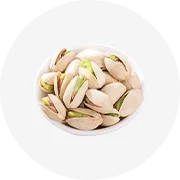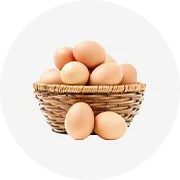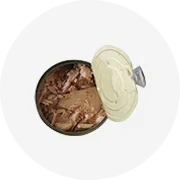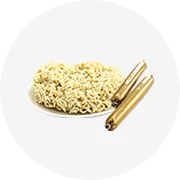

Industrial Cryogenic Strawberries Vegetable Shrimp Fish Iqf Tunnel Quick Blast Freezer Machine For Chicken




















The phrase whole frozen chicken for export refers to a poultry product that is prepared and preserved by freezing for the purpose of international commerce. This commodity is indispensable for markets that require poultry in large quantities, providing a consistent supply of chicken that maintains its nutritional value, flavor, and texture. Alibaba.com features an assortment of vendors who supply whole frozen chickens that cater to a wide range of commercial requirements.
The whole frozen chicken for export category encompasses a variety of products designed to meet different tastes and dietary needs. Apart from the primary classifications of organic, free-range, and conventional chickens, there are also specialized options such as corn-fed chickens, which boast a unique taste, and chickens enhanced with herbs or marinades to suit particular culinary traditions. Each variant is processed and frozen with the ultimate consumer in mind, enabling businesses to choose a product that resonates with their clientele's health concerns, ethical standards, or flavor preferences.
The structural integrity of frozen chicken is preserved through a rigorous process that spans from the farm to the freezing facility. Following humane slaughter, the chickens undergo systematic defeathering, evisceration, and meticulous cleaning to ensure hygiene. Quality inspections precede the chilling phase, which rapidly lowers the temperature to inhibit bacterial proliferation. The subsequent freezing phase utilizes cutting-edge IQF or BQF techniques, tailored to the product's intended presentation. The subsequent packaging phase is equally vital, involving robust materials that endure the demands of transportation and storage, thus preserving the chicken's structure until it reaches the end-user.
Choosing packaging materials for whole frozen chicken is a crucial decision that influences product integrity. Suppliers on Alibaba.com employ food-safe, low-density polyethylene (LDPE) or polyethylene terephthalate (PET) for vacuum-sealed bags, renowned for their superior barrier qualities against moisture and gases. Cardboard boxes for bulk shipping are often fortified with a wax or plastic coating to repel moisture. These materials are selected not only for their protective features but also for their compliance with global food safety norms, ensuring that the chicken remains uncontaminated and wholesome from packaging to unpacking.
The whole frozen chickens available on Alibaba.com are integrated into various commercial environments. In the food production industry, they form the foundation for items such as chicken patties and deli meats. For retailers, they provide supermarkets and grocery stores with a long-lasting product that appeals to time-pressed consumers. In the culinary realm, they offer restaurants an economical and adaptable ingredient that can be crafted into an array of dishes, from gourmet meals to quick-service food. The frozen chicken sector generates considerable economic value, creating jobs in processing facilities, distribution networks, and related sectors like packaging and logistics.
The whole frozen chicken fulfills several roles within the food supply chain. As a high-quality protein source, it is a staple in diets. Its preservation by freezing ensures a stable food supply, overcoming the challenges of seasonality and spoilage associated with fresh chicken. Moreover, the adaptability of frozen chicken allows it to be incorporated into a vast selection of recipes, meeting the demands of various culinary traditions and dietary preferences. It is a product crafted for convenience, offering businesses and consumers a ready-to-cook option without the need for further preparation.
The whole frozen chickens destined for export are distinguished by attributes that enhance their appeal in the marketplace. They are typically procured from certified farms committed to stringent animal welfare practices, ensuring ethical production. The employed freezing methods safeguard the chicken's inherent moisture, yielding a product that, once defrosted, closely mimics fresh chicken in both taste and texture. Additionally, precise portion control and standardized packaging aid in streamlining inventory management and meal planning for both businesses and consumers.
Opting for whole frozen chicken presents numerous advantages for both commercial entities and end-users. For businesses, it signifies a product less affected by price volatility and supply chain disturbances, providing a reliable stock item that can be stored and utilized as necessary. For consumers, it equates to a product that can be stored for extended periods, diminishing the need for frequent shopping trips and facilitating bulk purchases. The nutritional preservation afforded by the freezing process also means that consumers need not sacrifice health for the sake of convenience.
Proper use of whole frozen chicken starts with correct thawing, ideally in a refrigerator over several hours or overnight to guarantee safe and uniform defrosting. When choosing a product, businesses should assess the origin, processing techniques, and certifications of the chicken to match consumer values and quality standards. Hygiene protocols must be rigorous, with all surfaces and utensils disinfected before and after handling the chicken to avert cross-contamination. Maintenance primarily involves preserving the integrity of the cold chain from purchase to sale, ensuring the chicken's quality. Installation pertains to setting up sufficient cold storage facilities, which are essential for businesses that stock and sell frozen chicken.
The intended market for whole frozen chicken is extensive, ranging from large-scale food service providers to neighborhood grocers. The product satisfies the needs of this varied customer base by offering a dependable, safe, and flexible food solution. Preferences among these groups differ significantly, with some prioritizing cost, others emphasizing ethical production methods, and some requiring specific certifications like Halal or organic. Alibaba.com bridges the gap between these diverse demands and the suppliers capable of fulfilling them, ensuring that every business can identify the appropriate product for their clientele.
The whole frozen chicken prepared for export is processed and frozen swiftly post-slaughter, sealing in freshness and nutritional content. While fresh chicken is often favored for its immediate readiness, frozen chicken offers the benefit of an extended shelf life and the capability for long-distance transport without degradation, making it a dependable substitute for global commerce.
Appropriate storage is vital for preserving the quality of frozen chicken. It must be stored consistently at -18°C or below to prevent cycles of thawing and refreezing, which can compromise the texture and flavor. Suppliers on Alibaba.com ensure the cold chain is unbroken from processing through to delivery, assuring that the product remains in optimal condition.
Selecting the appropriate supplier on Alibaba.com entails considering aspects such as supplier certifications, customer feedback, and the capacity to fulfill large orders. Businesses should also weigh the diversity of products available, adherence to dietary standards, and the methods of packaging and freezing employed, to guarantee alignment with their specific requirements and quality expectations.